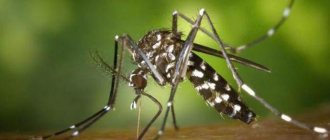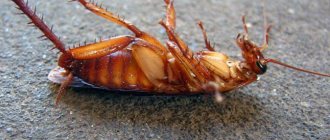Types of rats
Science knows about 70 species of rats. Among them there are quite exotic and little-studied rodents that live in remote and sparsely populated corners of the planet. There are not many species with which humans have to constantly fight for their territory. The ones found everywhere in Russia can be counted on one hand. The largest and most common species is the gray rat (pasyuk)
. The average body length of adult individuals is 25 centimeters, excluding the tail. The characteristic features of this species are a short tail relative to the body and a fairly wide muzzle with a rounded nose. The coat color is grey. Pasyuk values water in the immediate vicinity of his home, and therefore often settles on the banks of ponds or other water sources. In a metropolis, sewers and basements are the most suitable shelters for them.
Another common species throughout the world is the black rat.
. It is slightly smaller than the pasyuk - its average size is 22 centimeters. But the length of the tail, densely covered with hair, reaches 30 centimeters. It is characterized by large rounded ears and a sharp muzzle. The coat color is usually black-brown with a greenish tint, but there may be other options. The black rat, unlike the gray rat, is not so attached to water, and therefore feels great in any environment. Lives in forests, gardens, parks. In metropolitan areas, it often lives in landfills. He likes to live in attics, for which he received the nickname of the roof rat. However, it could well be called a ship rat, since it is the common inhabitant of sea and river vessels.
The third most widespread rat in the world is the small rat.
. It differs from its relatives in its small size - the length of its body is 15 centimeters. The tail is the same size, but unlike the tails of other species, it is completely naked with visually distinguishable subcutaneous rings, as if encircling the tail at certain intervals. This rat is found in the countries of Southeast Asia and the Pacific Islands.
The long-haired rat lives in the deserts of Australia
. The species is notable for its increased reproductive rates.
Silver belly rat
They are distinguished not only by their bright coloring, unusual for rats, but also by their impressive size. The red back and tail contrast with the light gray belly. An adult grows to the average size of a cat - its body length can reach 40 centimeters.
Gray rat - natural life in nature
INTERESTING ARTICLES
Coronavirus and society – April theses
09.06.2020
21.7k
Surgery
09.06.2020
11k
How your pets inspired you to open a grooming salon
09.06.2020
41.3k
Jermajur (Istisu) – hot springs of Artsakh
09.06.2020
63.4k
Azokh Cave: nine years later
08.06.2020
58.8k
Dark Azokh Cave
08.06.2020
60.9k
The natural habitat of the gray rat is often not a forest or a field, but the coast of a reservoir, where gray rats lead a semi-arboreal lifestyle. In nature, gray rats lead predominantly group existence. Within a colony, sometimes consisting of several hundred individuals, a complex hierarchy is formed with a dominant male and several dominant females.
The territory of each such rat group can be up to two thousand square meters.
Gray rats, like all wild animals, are very careful. An adult rat carefully examines the territory for danger before choosing a new habitat. Even living in the city, next to humans, rats remain wild animals.
Why are gray rats not afraid of ponds? Because rats, in principle, are not very afraid of water, they swim well and even know how to dive. Gray rats have very mobile fingers and a flexible tail, which they use as a safety net and a fifth paw when climbing. Therefore, gray rats are capable of leading not only a terrestrial, but also a semi-arboreal lifestyle, climbing trees and making nests in abandoned hollows. So, gray rats dive, jump, swim well and move well through trees.
Gray rats are very active and hardy animals; they run well. Gray rats are capable of moving at a speed of 10 km/h, jumping up to a height of up to 80 cm, and in an aggressive state - almost 2 meters in height. During the day, gray rats are able to cover from 10 to 50 km.
A rat's heart beats 500 times per minute, which is 10 times faster than a human's.
Rats are crepuscular animals and do not have very good eyesight. They move their heads from side to side, among other things, to better focus their gaze.
The gray rat's hearing and sense of smell function well: they perceive sounds with a frequency of up to 40 kHz (for comparison, humans up to 20 kHz), and they detect odors at considerable distances. It only takes a gray rat 50 milliseconds to figure out where the smell is coming from.
Rats can easily withstand exposure to radiation (up to 300 roentgens/hour), but can die from mental shock or prolonged stress. Rats are capable of sensing X-rays, something that no other animal on the planet seems to be able to sense. X-rays are perceived in rats by the part of the brain that controls the sense of smell.
Rats whistle in the ultrasonic range, which allows them to communicate with each other without attracting the attention of predators. Moreover, rats whistle with their throats. They are also capable of suddenly changing the frequency of signals. Rats have a rich vocabulary of calls with special meanings.
Rats have different personalities, and in this sense they are similar to people. There are good rats, there are mean ones, there are cunning ones... And sometimes the death of a friend is a great stress for a rat.
In nature, the weight of an adult rat is relatively small - 250-500 grams and only in very rare cases can it reach 600 grams.
The diet of rats depends on their habitat and lifestyle. Rats are absolutely omnivorous; their diet includes both meat and plant foods. In the city they eat waste because there is nothing else to eat. But there are many colonies living outside urban conditions, and their favorite diet is not waste.
On average, each rat eats about 25 grams of food per day. These rodents do not tolerate hunger well and after 3-4 days of fasting they inevitably die.
Gray rats experience the lack of water even worse: for normal existence, the animal needs 30-35 milliliters of water per day. When consuming wet food, the daily water intake is reduced to 10 milliliters.
Rats that live far from human habitation feed on small rodents, mollusks and amphibians (frogs, toads, newts), eat eggs, as well as chicks from nests located on the ground. Inhabitants of coastal areas consume representatives of aquatic flora and fauna throughout the year, especially those found directly in the coastal strip. The rat's plant food consists of cereals, seeds and succulent parts of plants. Rats' teeth grow throughout their lives, so they are always gnawing on something to wear them down.
The lifespan of a rat in the wild is short and does not depend on the species: gray rats and black rats in nature rarely live up to one and a half years. In laboratory conditions, the life of a rodent increases significantly, and in home conditions, some rats can live up to 3-3.5 years. According to the Guinness Book of Records, the oldest rat was 7 years and 8 months old at the time of death.
Rats appeared on Earth about 11 thousand years ago. The rat is considered one of the most widespread animals on the planet, and the fossil remains of the very first rats have lain in the ground for several millennia. On average, there are two rats for every inhabitant of the planet.
Rats have a wide variety of species and live almost everywhere: in Europe and Russia, in Asian countries, in North and South America, in Australia and Oceania, in New Guinea and the island countries of the Malay Archipelago. These rodents are not found only in the polar and subpolar regions.
Authors Igor and Larisa Shiryaev Consultants: Pronina Ekaterina , breeder of the nursery of decorative rats “Krasnoyarsk”, Krasnoyarsk Gashnikova Anna , breeder of the nursery of decorative rats “Iron Rat”, Minsk, Belarus
Internet media "Interesting World". . 11/26/2016
Dear friends and readers! The Interesting World project needs your help! With our personal money we buy photo and video equipment, all office equipment, pay for hosting and Internet access, organize trips, write at night, process photos and videos, type up articles, etc. Our personal money is naturally not enough.
If you need our work, if you want the “Interesting World” project
continued to exist, please transfer the amount that is not burdensome for you to your
Sberbank card: Visa 4276400051181130
Shiryaeva Larisa Artyomovna.
You can also transfer Yandex Money to your wallet:
410015266707776
. This will take you a little time and money, but the magazine “Interesting World” will survive and delight you with new articles, photographs, and videos.
Tags: biology and medicine
Where do rats live and what do they eat?
Rats live everywhere. In the wild they live:
- In forests;
- In the fields;
- In deserts;
- On the banks of reservoirs;
- Wherever they are able to get their own food.
Rats settle in populated areas:
- In the basements;
- In attics;
- In garages;
- In barns;
- In warehouses;
- In food storage;
- In production premises;
- In landfills;
- In sewers;
- In the cellars;
- In barns;
- And even in apartments;
FACT
The range of temperatures comfortable for rats to live and reproduce is incredibly wide. They feel great and reproduce safely at air temperatures from minus 20 to plus 50.
Rats are omnivores and very voracious. They feed on both plant and animal foods. In the absence of food for a long time, they are able to devour each other and their offspring.
FACT
Rats cannot tolerate hunger or thirst at all. Without food, a rat will not survive even three days! Even less without water. Two days without life-giving moisture can kill a rodent.
Maybe this is why rats are incredibly thrifty. The fear of being hungry prompts the rat to continuously carry food into its hole. Those who managed to stumble upon a rat's pantry simply threw up their hands in surprise - these supplies could feed an entire family for months. Among the rat's supplies you can find several buckets of potatoes, carrots and other vegetables. Sausages, cheeses, eggs, just in commercial quantities. There is also no shortage of cereals and cereals. Rats are known to consume one fifth of the world's grain crops.
How do rats live and what can they do? Interesting facts about nasty rodents
However, rats are still unique creatures. There are many interesting facts about these animals.
At critical moments in their lives, obeying the instinct of survival, they are able to eat their own, newly born cubs. Or weaker relatives, or even dead rats. If the rat realizes that it has nowhere to go, it will be able to feed on its own feces for a while. Scientists have recorded this as well.
The size of rats is often exaggerated. The largest rat, the Norway rat, rarely weighs more than 900 grams. This is five times less than a simple house cat.
Photo: Depositphotos
In addition to the omnivorousness mentioned above, rats demonstrate other miracles of survival.
For example, an average-sized rat will fit through a hole the size of a modern five-ruble coin. That is, “reliable” protection in the form of a chain-link mesh may not stop it.
There are known cases when several generations of the same rat lived “every day” at the top of a coconut tree and did not come down from there!
One day, in an American fish hatchery, workers noticed rats diving into the water for fish fry and successfully catching them!
Photo: Depositphotos
Rats (and mice, too, by the way) are able to climb vertical brick walls. In addition, gray nimble creatures can swim almost 800 meters along a river or lake!
The rat really reproduces at an incredible speed. It has been established that within a year the offspring of one individual can amount to almost 15,000 units! Even taking into account the fight against rats on all continents, the figure is impressive...
The United States once tested nuclear weapons on the Pacific islands. Biologists waited several years after the tests and decided to install animal traps on one of the relatively intact islands. Much to the scientists' surprise, these traps were filled with rats.
Thus, it was possible to establish that the gray nimble creatures are quite resistant to radiation. Moreover, in the case described, it was possible to understand that the irradiated rats even began to live longer.
Photo: Depositphotos
Rats have a good memory. If they notice that a simple brick, or even more so a trap, has been moved to a slightly different place, they will avoid the suspicious place for a couple of days.
However, in order not to frighten readers, it is necessary to clarify that rare species of rats live more than one year. This is probably how nature disposed of these animals due to their enormous fertility. What if rats lived as long as wolves or foxes...
In addition to causing damage to property, rats can directly cause harm to humans. Now everyone knows that in the Middle Ages it was rats that caused massive plague epidemics. In one of the editions of the Bible of the 13th century there is even a rather plausible drawing on this subject.
In general, rats carry pathogens of almost 20 diseases, sometimes even more. And although people have learned to fight many diseases, in the case of rats we need to keep our finger on the pulse. If only because in the Middle Ages, a plague epidemic in three years claimed the lives of approximately 25,000,000 people!
Photo: Depositphotos
For many years it was believed that the best remedy against rats was a cat. However, scientists have calculated that a cat destroys a maximum of 30 rats per year, that is, even 100 cats, 200 or 500 (for example, in one village), given the enormous fertility of rats, are not able to significantly reduce the rodent population.
Over the past decades, people have come up with many ways to control rats. Some of them are effective. However, the rats are not going to give up and adapt quite successfully to new conditions. So it is still unclear who will ultimately be stronger - a man or a small gray creature...
Tags: rats, rodents, interesting fact, rat control
How dangerous are rats to humans?
Rats are a serious threat to human health. Under certain circumstances, rats can destroy as many human lives as sometimes even war does not claim. So in the 16th century, rats killed a third of the population of all of Europe, bringing here the plague, the epidemic of which spread across the continent like wildfire. These inhabitants of garbage dumps, city dumps and sewers are carriers of more than eighty different diseases, many of which are deadly. This:
- encephalitis;
- sodoku;
- streptobacillosis;
- rabies;
- typhus;
- fever;
- cryptosporidiosis;
- giardiasis;
- leptospirosis;
- tularemia;
- listeriosis;
- tuberculosis;
- hepatitis;
- salmonellosis;
- toxoplasmosis;
- plague.
INTERESTING
It is surprising that, being walking death that mows down people, the rats themselves remain unharmed - all the infections and viruses that they carry do not affect their own health in any way! These tenacious creatures are resistant even to strong doses of radiation.
In addition to the obvious threat to health, rats also cause serious economic damage to humans. It is difficult to calculate all the colossal damage to agriculture, private gardens and vegetable gardens. Rodents destroy grain crops, root crops, seedlings, seedlings, fruit trees, and fruits literally on an industrial scale.
Organizations carrying out pest control
Since rats are a scourge throughout the country, the issue of their destruction is decided at the state level. There is even a law of the Russian Federation obliging the heads of administrations of all settlements and all legal entities to engage in pest control in the territory under their jurisdiction. This does not mean that they themselves must destroy all the rats - their task is to ensure the result by hiring professionals in the field of pest control. The direct performers of this work at the moment are exclusively private companies that provide disinsection, disinfection and deratization services to both individuals and legal entities. In socialist Russia, this function was performed by state sanitary and epidemiological stations, but now they are entrusted only with the tasks of supervision, control and scientific research. Entrusting the direct extermination of rats to private companies was a strategically correct decision - in a competitive environment, each performer strives for quality and gives a guarantee for his work. In addition, small companies are able to quickly resolve all issues without bureaucracy and additional approvals. They themselves purchase drugs, equipment and personal protective equipment, ensure the timely replenishment of all resources for successful and uninterrupted work, which clumsy government structures financed by the state budget cannot boast of. The best companies are always those that have entered this market a long time ago and intend to work in this area seriously and for a long time. They have many years of experience, knowledge and a whole arsenal of necessary means for exterminating rats. A striking example of such a successful company is the SES company.
The life of rats and baby rats
See also:Rats are rodents: description
The damage caused by rats
Ways of rats to spread indoors
Folk remedies for getting rid of rats
Extermination of rats with the help of professionals
Rats are highly prolific omnivores that have taken over the entire world. In Great Britain alone, according to various estimates, there are from 40 to 60 million rats. Such a large number of these animals is explained, among other things, by their behavior in the vicinity of people.
Generations of living near humans have changed the rats quite a lot. They have become more aggressive and much smarter than most rodents. Today, scientists are trying to unravel the analytical abilities of rats and make assumptions about the presence of abstract thinking, which allows them to survive in unfamiliar surroundings.
One of the key factors in this is the enormous ability to adapt to different living conditions. Most rats are actively improving and becoming more experienced every day they live. In addition, they are able to pass on this knowledge to their descendants and warn their relatives about danger.
Rats reproduce very actively. Females give birth to 14 litters per year, each containing 2-12 cubs. Moreover, the older the female, the more pups she brings. As a result, after a year the number of rats increases several dozen times. Thus, they take over entire cities, living in large numbers in sewers and drains.
When entering a home or business, rats actively breed in a specially equipped burrow, which I keep clean, unlike mice. Baby rats are born naked and blind, with their ear canals closed. After 15 days, their eyes open and their independent exploration of the world begins. At the age of 1.5 months, rats are considered adults and are ready for independent living. The female can eat weak cubs, thereby actively regulating the number of pups and their strength.
Rats are excellent at remembering information and remember even the most complex mazes. Their sense of direction is better developed than most rodents. They are constantly looking for new nesting sites, as well as food, which they need in large quantities. The omnivorous nature of rats makes their extermination a very difficult task.
Having reached a food source, the rat remembers the route and leaves special marks for its relatives, if this population lives in colonies. At the same time, the rat diligently avoids human habitats if there is an insufficiently concentrated smell of other rats from the same colony. The human smell has a repellent effect on rats. This is why they do not eat bait made with unprotected hands.
The form of social organization of rats can vary greatly depending on the population. In some places animals live alone, in others they form families or packs, and in others they live in colonies. The colonial form of interactions is most common in large cities. One colony can consist of up to 1000 rats, which cover a territory of over 1500 m2. They actively guard it and constantly examine it for new food sources.
When there is an abundance of food, rats reproduce very actively; their population grows faster, the more comfortable the conditions created. Experienced rats accumulate a large amount of knowledge. Their nose is able to pick up smells and remember them. Therefore, rats know what certain poisons smell like. In addition, their resistance to chemicals and radiation is simply amazing. Thus, an adult rat can eat poison and not die, but pass on knowledge about it to its fellow tribesmen. Often, surviving rats have increased resistance to poison, and in their descendants it is innate. This is why poisons used 50 years ago have virtually no effect on modern pasyuki.
Rats are very wary and rarely accept poisoned bait. If they sense danger, they hide immediately and do not return this route. They are selective and often very intelligent, able to adapt to situations and constantly analyze their surroundings. It is these qualities that make fighting them so difficult.
At the same time, standard methods often become ineffective against a sufficiently large colony. In most cases, you have to use the knowledge and experience of professionals to catch rats efficiently. There are also traditional methods of struggle that can be used. It is worth remembering that they only reduce the number of rats. Only professional treatment of the premises can completely destroy these pests!
For more detailed information, as well as to call a specialist, call the multi-line phone in Moscow +7 (495) 773-21-95 or send a message
How often should deratization be carried out?
Deratization should be carried out as needed, that is, at the first, even indirect, signs of the appearance of rats in the room. Evidence of rodents visiting the site can be their excrement, teeth marks on various surfaces, scattered food, bits of food and other evidence left by the “raiders” at the crime scene. However, according to the law of the Russian Federation, there are a number of social facilities where it is necessary to carry out rat control once a month for preventive purposes in order to eliminate the possibility of rats appearing. Proactive action should be taken in all facilities where food is stored, processed, packaged or prepared. Such objects include:
- Public catering points;
- Enterprises producing or processing products;
- Kindergartens;
- Schools;
- Sanatoriums and holiday homes;
- Hospitals;
- Nursing home;
- Terminals and storage;
- And other similar objects;
Basic pest control tools
Man has been waging war against rats since those ancient times, when neither tools as such nor the very concept of deratization existed. In those distant times, the most popular and effective method of exterminating rats was biological, that is, using cats, dogs and the rats themselves. Here, humans took advantage of the noted tendency of rodents to cruelty and cannibalism. People artificially created a “rat king.” Several rats were caught and placed in a confined space without food. Rats cannot stand hunger, so after a couple of days they begin to eat each other. The winner, the strongest surviving rat, was fed for some time with weakened relatives in order to finally become accustomed to a certain feeding style. Then this monster was released into the territory to be “cleaned up.” All the work of exterminating rats was done with the hands, or rather, with the teeth of the rats themselves. Simple, like everything ingenious. It is not surprising that the sophisticated and resourceful human brain eventually came up with other ways to combat rodents. Today, any city dweller has a much wider choice of them than a caveman. So everyone can satisfy their preferences.
Rat traps
The most common and simple trap is a regular mechanical rat trap with a spring.
.
There are many modifications, but they all work on the same principle - the spring straightens when you touch the nozzle with bait and the gripping mechanism pinches the rodent's head. The advantages of this method are ease of use, lack of dependence on the electrical network, and ease of installation. The disadvantage of this device is that the mechanism operates blindly once and can easily “miss”. Rats have a good reaction and well-developed intuition, which allows them to dodge danger in time. More reliable traps in this regard are adhesive traps
- they do not allow the rodent to escape, securely gluing the paws to the base of the structure. Another advantage of these devices is that there is no need to remove the corpse from the trap - they are disposable and are disposed of along with the rat.
Poisoned Bait
There are a lot of poisons for rats, both in form and content. Granules, briquettes, liquids - they all have a detrimental effect on rats. Depending on the active substance, the death of the rodent occurs within 1 to 15 days. Poisons with the active substance diphasinon kill rodents slowly. Repeated administration of the drug is required for a lethal dose. Substances containing brodifacoum or bromadiolone act faster; a rat only needs to try the poisonous bait once for it to go to another world. The most powerful rat poison with an immediate effect is based on strychnine, thallium salts, lead, phosphorus, and arsenic. Phosphorus damages bone tissue, arsenic affects the nervous system, and other components cause severe poisoning. Preparations based on zoocoumarins have become widespread for home use. You can always find drugs such as:
- Rat Death;
- Storm;
- Nutcracker;
- Goliath;
- Clean house;
- Mortorat;
- Zookoumarin Neo;
- Hedgehog;
- Ratindane;
- Zernotsin;
- Tsunami Extra;
- Varat.
All these poisons are quite toxic and dangerous not only for rats, but also for people and pets. In addition to the risk of poisoning your pets, there is a risk that death will overtake rodents in hard-to-reach places under wall cladding or tiled lining of water pipes. It is almost impossible to remove corpses from such places without destroying the structure. The smell from decaying animals is unbearable and harmful to health. So when choosing rat poison, consider all the risks! If you are not inclined to risk your health, then it is better to consult a specialist.
IMPORTANT
Companies professionally engaged in deratization, firstly, use special closed-type traps in which the poison is inaccessible to children and pets, and secondly, they use new generation drugs with a mummifying effect. After their absorption, the corpse dries out without the spread of unpleasant odors. That is, specialists remove all risks and provide a guarantee for their work.
The rat is a dangerous, cunning and intelligent opponent. You must be prepared to fight him in every way!
Spraying deterrent chemicals
Rats are wary of any strong odors. And from some people they know well, they simply run away. Among them there are aromas of both plant origin and chemical preparations. Plants include peppermint, tansy, and wormwood. These aromas are commercially available in the form of essential oils, in which the concentration of active substances is significantly higher than that of the fresh or dried plant. They can be used undiluted for spraying around the room. Gardeners and summer residents can be recommended to plant black elderberry around the house and beds. The roots of the plant release cyanide into the soil. However, all parts of the plant contain hydrocyanic acid to one degree or another and are a strong poison for rats. They avoid the danger they know well.
Among chemical substances, rats are particularly disliked by ammonia; however, any insecticides with a pungent odor are suitable for spraying indoors.
Another smell that serves as a signal to escape is the smell of burning wool. Our ancestors, in order to drive rats out of their territory, burned one killed rodent and left it where rats got into the habit of visiting - in a barn, cellar, barn. So to speak, a demonstrative execution for the edification of the entire tribe. To use this ancient method of repelling rats, it is not necessary to catch and kill the animal - you can just as easily set fire to a piece of any natural fur or wool. This source of smell can be left for some time even in a city apartment.
Ultrasonic repellers
Rats communicate with each other using ultrasound, so they react to ultrasonic waves and listen warily to their radiation. If they sense a distress signal, a threat, or obvious danger, they take flight. If the manufacturers of the ultrasonic repeller did not bother to ensure that the signal was exactly the same, then the rats very soon get used to the monotonous impulses and stop responding to them. We must not forget that the rat is not just a very smart animal, but a highly intelligent creature with excellent instincts - it is quite capable of distinguishing a real threat from an imaginary one. At the moment, the market offers a large selection of rat repellers of varying power.
On sale you can find devices designed both for the area of a small apartment and for large-scale industrial premises.
One of the most famous brands is the Grad ultrasonic repeller. Various modifications of the installation operate in the range from 500 to 1200 square meters, have a unique sound pattern based on the biorhythms of rodents and are equipped with several emitters that send impulses in different directions. Many models of this brand are capable of operating autonomously, without requiring constant connection to the electrical network. All these models can be successfully used in production. For small apartments, we can recommend a set of three Weitech WK-3523 ultrasonic repellers. Each of the three devices in the set is equipped with a plug and is plugged directly into the outlet as a fumigator. You can use one device or all three in different rooms. Each of them has a repellent area of 45 square meters. The devices operate silently and are designed for round-the-clock operation. You can only check how effectively this product will protect you from rodents empirically. A person approaches the extermination of rats, as well as other everyday problems, with his own standards, principles, and preferences. Of all the methods of controlling rodents, everyone can choose the best one for themselves. Eliseeva Natalya Viktorovna
Character of rats
Rats are pets that love to interact with people and develop strong bonds with their owners. They love to cuddle and climb on their owners, and if you socialize them properly, they enjoy being in the hands of their human. Rats often happily sit on their owners' shoulders or heads, or find them dozing on their owners' laps if given the opportunity. They have also been found to experience emotions in the same way as humans. They can feel loneliness and empathy, which helps guide their social behavior around people as well as other rats.
Rats can be trained to do all sorts of behaviors and tricks. If you like the idea of learning about animal behavior and training but don't have room for a dog, a rat is a great beginner pet. They quickly adapt to clicker training and can be home trained, learn their name, and learn to do almost anything that is physically possible for them.
Rats are relatively easy to care for compared to other pets. They keep themselves clean like cats, although they will rely on you to keep their cage free of contamination. You do not need to bathe or brush them except in special medical cases. You won't have to deal with shedding, and some rats are even hairless.
They also don't tend to bite. While this behavior is always a possibility, it occurs much less frequently in rats compared to other similar pets. If you are looking for a small pet that is suitable for children, a rat may be a better choice than other rodents that tend to bite and are less easy to handle.
Rats don't need large spaces, so you can easily keep your rat happy by living in a small space like an apartment. They do need time out of the cage, but they won't need a yard to roam, so they are much easier to keep than, say, a dog.











